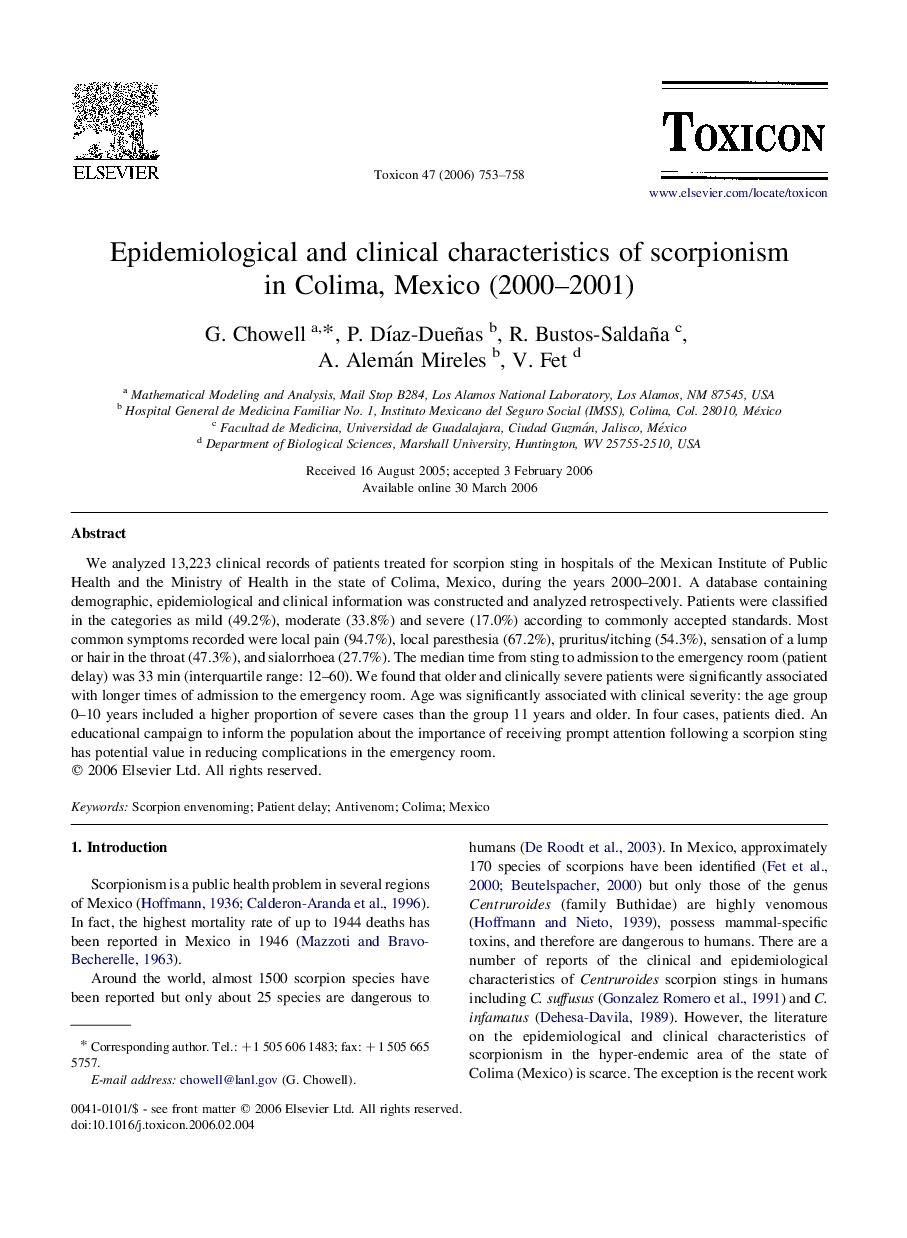| Article ID | Journal | Published Year | Pages | File Type |
|---|---|---|---|---|
| 2066272 | Toxicon | 2006 | 6 Pages |
We analyzed 13,223 clinical records of patients treated for scorpion sting in hospitals of the Mexican Institute of Public Health and the Ministry of Health in the state of Colima, Mexico, during the years 2000–2001. A database containing demographic, epidemiological and clinical information was constructed and analyzed retrospectively. Patients were classified in the categories as mild (49.2%), moderate (33.8%) and severe (17.0%) according to commonly accepted standards. Most common symptoms recorded were local pain (94.7%), local paresthesia (67.2%), pruritus/itching (54.3%), sensation of a lump or hair in the throat (47.3%), and sialorrhoea (27.7%). The median time from sting to admission to the emergency room (patient delay) was 33 min (interquartile range: 12–60). We found that older and clinically severe patients were significantly associated with longer times of admission to the emergency room. Age was significantly associated with clinical severity: the age group 0–10 years included a higher proportion of severe cases than the group 11 years and older. In four cases, patients died. An educational campaign to inform the population about the importance of receiving prompt attention following a scorpion sting has potential value in reducing complications in the emergency room.
